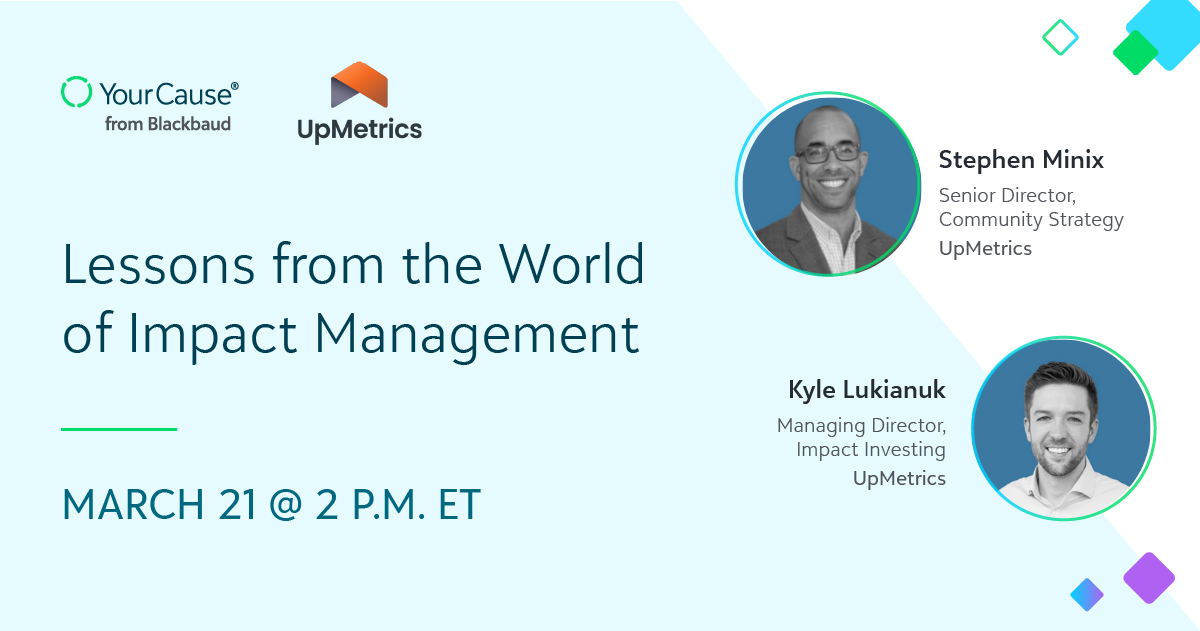Author: Arnav Lahiry
Over the past decade, the Effective Altruism (EA) movement has gained massive momentum both as a philosophy and community focused on maximising the impact of efforts to do good in the world.

The main idea behind Effective Altruism is to use evidence and reason to determine the most effective ways to help others and then take action on that basis.
It is unsurprising that an approach that emphasizes the importance of impact measurement and data-driven decision-making has attained such popularity, especially in the philanthropic space, where scrutiny is high and the desire for true charitable outcomes is top of mind.
However, at present, the ideas are mostly endorsed and enacted by dedicated EA organizations, individual professionals and donors (including a few billionaires) and academic circles, without major involvement from the corporate social responsibility space.
To further understand how Effective Altruism can integrate into a business’ social impact strategy, it is worth more deeply exploring the core tenets of this philosophy. Apart from maximizing good and aligning with evidence, some key beliefs of EA are that ‘doing good’ means to improve the welfare of others (welfarism) and that every person’s life is equal, regardless of demographic factors such as location (impartiality).
While these may seem like fairly uncontroversial principles to many, they can be at odds with traditional philanthropy, which is mostly done emotionally, and towards a cause that is personal or in support of a local community. So, how can this idea of effectiveness elevate businesses with established corporate responsibility programs?
The Power of Corporations
Corporations have massive scope for impact in the philanthropic space, with corporate giving in the US totalling approximately $21 billion in 2021. When the most effective interventions can have 100-1,000 times the welfare improvements of other charitable options, driving large-scale funding towards these causes could bring about incredible support to those that need it most. Additionally, businesses can benefit from more robust reporting on true social impact, which appeals to shareholders, employees, and customers alike.
It is possible to dedicate some thought to what work could be most impactful and assess the effectiveness of ongoing projects through a lens of EA without abandoning efforts that are very personal & local to a company’s employees and existing CSR programs. Under limited resources, how exactly can we identify the most pressing problems and effective solutions? As it turns out, EA has a useful framework to think through this problem.
The Effective Altruism Framework
When considering how to do as much good as possible with the resources available, it is critical to find the most important causes to work on (cause prioritization) and evaluate the effectiveness of different interventions across these cause areas.
The EA framework of cost-effectiveness posits that social impact per resource is highest when causes are large in scale, highly solvable and currently neglected.
- Scale: the number of people affected and the degree to which they are affected.
- Solvability: the fraction of the problem solved by increasing the resources by a given amount.
- Neglectedness: the amount of resources already going toward solving the problem.
Choosing causes or interventions where it is not possible to help a large population, or where it is very hard to solve the relevant problems, could significantly limit the impact. Similarly, if there are already a lot of resources going towards a cause area, the marginal utility of additional resources may not have as large of an impact, as per the law of diminishing returns.
Metrics and Acquiring Data
This framework only scratches the surface of the levels of research done in determining effective social impact solutions. More tangibly, EA researchers utilize Randomized Controlled Trials (RCTs) when analyzing interventions to observe the effect on welfare in groups that have received support against a control group. From there, it is possible to formulate the impact per resource for specific social initiatives. For instance, Helen Keller International’s Vitamin A Supplementation Program has been highlighted by GiveWell as one of the most cost-effective charitable interventions out there, at $3,500 per life saved.
This deep level of investigation can be challenging and resource-intensive for corporations to conduct when deciding the cost-effectiveness and true welfare impact of their CSR programs. Fortunately, there are a few charity evaluation and research organizations that are already working on this and making the information publicly available, such as a list of recommended high-impact, cost-effective charities from GiveWell and Giving What We Can, or a list of cause selection reports from Open Philanthropy.
At this moment, the top cause areas identified by EA research are broadly comprised of improving global health, economic conditions, animal welfare and long-term problems like climate change, biosecurity and AI risk. Even so, beyond following direct recommendations or scouring through the research, there are several ways to practically introduce some of the basic ideas from Effective Altruism into CSR strategy.
Steps to Incorporate Effectiveness into CSR Strategies
Consider the EA cost-effectiveness framework
When running a CSR program, think about the scale, solvability and neglectedness of the problem at hand. Are there solutions that may produce a greater result for the same amount of resources? Is it a cause or charity that is overcrowded? How much extra value would your resources provide?
Apply impartiality
On top of supporting your local community, are there people globally that could benefit from these resources in an outsized manner? Money can typically go further in less developed countries. What are the opportunities to create the largest impact in line with your mission?
Engage evidence-inclined employees
Certain employees may be philanthropically driven by data and evidence. Engaging these colleagues in fundraising, donations or skill-based volunteering towards effective social impact initiatives can be a compelling way to drive interest and champion CSR ambassadors.
Leverage Technology
Through a CSR technology solution, corporations can highlight the most cost-effective campaigns, incentivize impact by offering double matching schemes on select charities, or utilize employee resource groups (ERGs) to rally greater employee engagement in effective giving and volunteering.
The Growth of Effective Social Impact
With the growing focus on impact reporting in CSR, there is real potential for businesses to start incorporating concepts from Effective Altruism to quantify and maximize their social impact. Although embracing EA’s philosophy in totality can be difficult for some, there are undoubtedly valuable frameworks and resources that apply to any social responsibility strategy.
Impact, evidence, and impartiality create a strong foundation for corporate philanthropy. Ultimately, by allocating resources towards the most effective causes and interventions, corporations can demonstrate a commitment to creating real, measurable change in the world.
Looking for more tips to get started with impact measurement and management? We recently partnered with UpMetrics to provide a webinar on impact management 101. The topics covered dive into:
- What’s needed to get started
- Common data challenges
- Common KPI’s to measure
- Using data to tell your social impact story
UpMetrics provides examples and lessons learned from their work with nonprofits, CSR professionals, foundations and impact investors. You can now watch this webinar on-demand.

